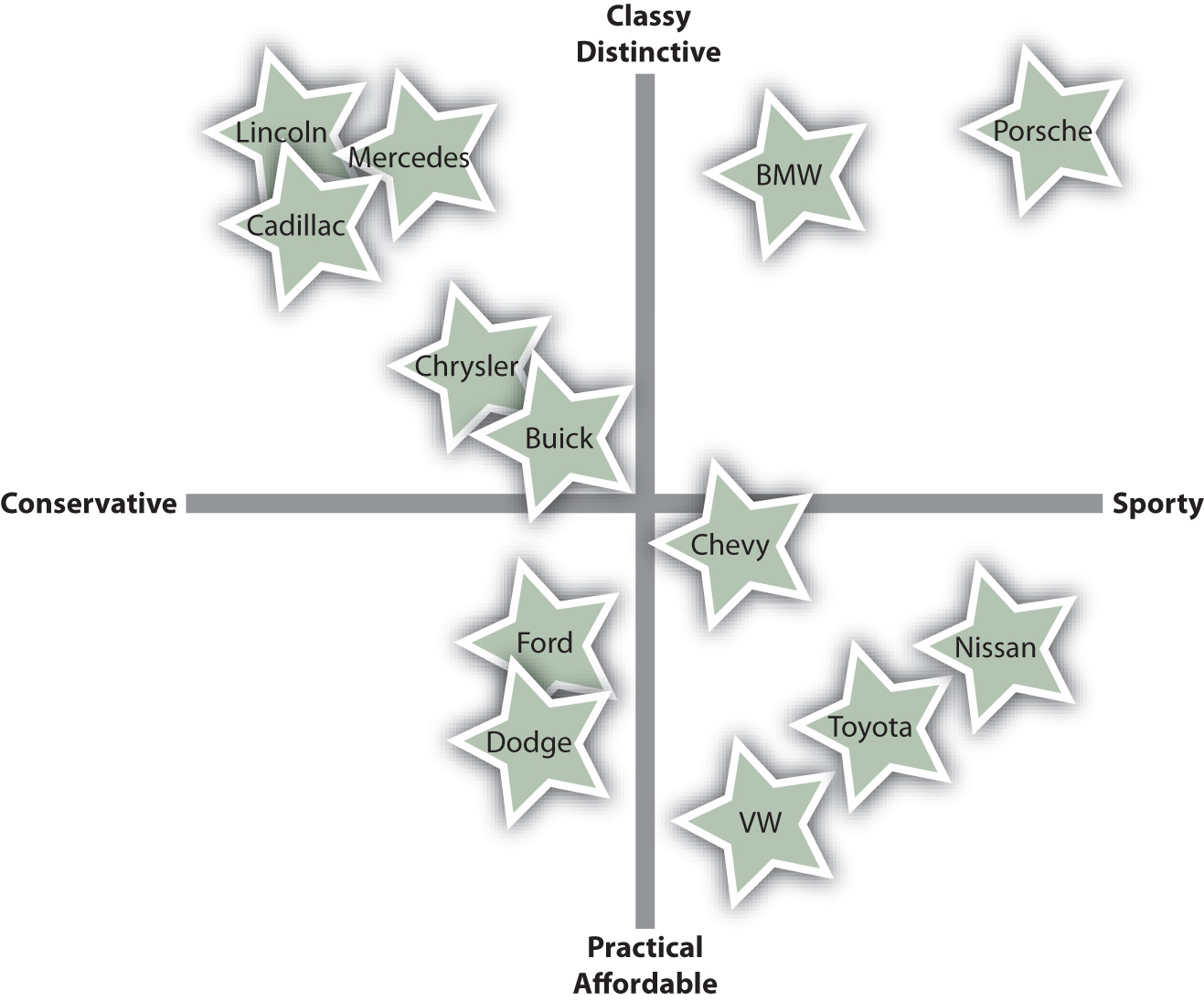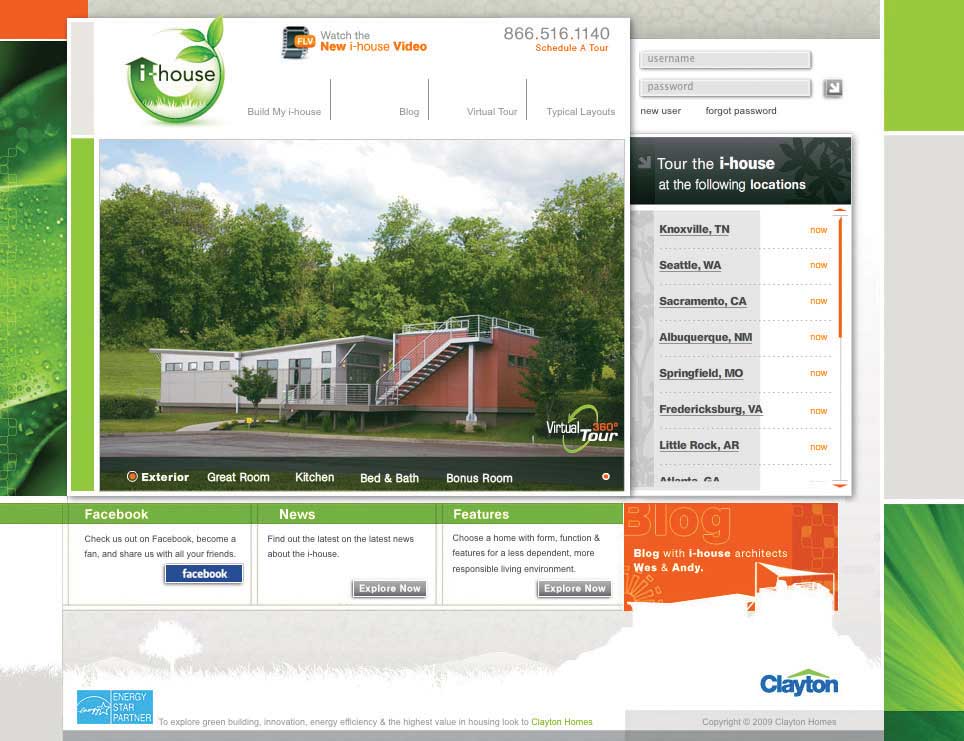This is “Positioning and Repositioning Offerings”, section 5.4 from the book Marketing Principles (v. 1.0). For details on it (including licensing), click here.
For more information on the source of this book, or why it is available for free, please see the project's home page. You can browse or download additional books there. To download a .zip file containing this book to use offline, simply click here.
5.4 Positioning and Repositioning Offerings
Learning Objectives
- Explain why positioning is an important element when it comes to targeting consumers.
- Describe how a product can be positioned and mapped.
- Explain what repositioning is designed is to do.
Why should buyers purchase your offering versus another? If your product faces competition, you will need to think about how to “position” it in the marketplace relative to competing products. After all you don’t want the product to be just another “face in the crowd” in the minds of consumers. PositioningTailoring a product or its marketing so that it stands out from the competition and people want to buy it. involves tailoring your product so that it stands out from the competition and people want to buy it.
One way to position your product is to plot customer survey data on a perceptual map. A perceptual mapA two-dimensional graph that visually shows where a product stands, or should stand, relative to its competitors. is a two-dimensional graph that visually shows where your product stands, or should stand, relative to your competitors, based on criteria important to buyers. The criteria can involve any number of characteristics—price, quality, level of customer service associated with the product, and so on. An example of a perceptual map is shown in Figure 5.10 "An Example of a Perceptual Map". To avoid head-to-head competition with your competitors, you want to position your product somewhere on the map where your competitors aren’t clustered.
Figure 5.10 An Example of a Perceptual Map

Source: Adapted from http://en.wikipedia.org/wiki/Perceptual_mapping.
Many companies use taglines in their advertising to try to position their products in the minds of the buyer—where they want them, of course. A taglineA catchphrase designed to sum up the essence of a product. is a catchphrase designed to sum up the essence of a product. You perhaps have heard Wendy’s tagline “It’s better than fast food.” The tagline is designed to set Wendy’s apart from restaurants like McDonald’s and Burger King—to plant the idea in consumers’ heads that Wendy’s offerings are less “fast foodish,” given the bad rap fast food gets these days.
Sometimes firms find it advantageous to reposition their products—especially if they want the product to begin appealing to different market segments. RepositioningThe process of “moving” a product to a different place in the minds of consumers. is an effort to “move” a product to a different place in the minds of consumers. The i-house, a prefab house built by Clayton Homes, a mobile home manufacturer, is an example. According to the magazine Popular Mechanics, the i-house “looks like a house you’d order from IKEA, sounds like something designed by Apple, and consists of amenities—solar panels, tankless water heaters and rainwater collectors—that one would expect to come from an offbeat green company out of California selling to a high-end market.”Ariel Schwartz, “Clayton Homes’ i-house Combines Energy Efficiency and Modular Affordability,” Fast Company, May 4, 2009, http://www.fastcompany.com/blog/ariel-schwartz/sustainability/clayton-homes-75k-energy-efficient-i-house (accessed December 9, 2009). A Clayton Homes spokesperson says, “Are we repositioning to go after a new market? I would think we are maintaining our value to our existing market and expanding the market to include other buyers that previously wouldn’t have considered our housing product.”“Clayton ‘i-house’ is giant leap from trailer park,” Knoxvillebiz.com, May 6, 2009, http://www.knoxnews.com/news/2009/may/06/clayton-i-house-giant-leap-trailer-park/ (accessed April 13, 2012).
Figure 5.11 The Clayton i-house: “A Giant Leap from the Trailer Park”

Source: http://www.claytonihouse.com.
Recently, Porsche unveiled its new line of Panamera vehicles at a Shanghai car show. The car is a global model, but unlike Porsche’s other cars, it’s longer. Why? Because rich car buyers in China prefer to be driven by chauffeurs.John Gapper, “Why Brands Now Rise in the East,” Financial Times, April 23, 2009, 9. How do you think Porsche is trying to reposition itself for the future?
Audio Clip
Interview with Apurva Ghelani
http://app.wistia.com/embed/medias/416c5bb392Listen to Ghelani’s advice to students interested in working in his area of marketing.
Key Takeaway
If a product faces competition, its producer will need to think about how to “position” it in the marketplace relative to competing products. Positioning involves tailoring a product or its marketing so that it stands out from the competition and people want to buy it. A perceptual map is a two-dimensional graph that visually shows where a product stands, or should stand, relative to its competitors, based on criteria important to buyers. Sometimes firms find it advantageous to reposition their products. Repositioning is an effort to “move” a product to a different place in the minds of consumers.
Review Questions
- Why do companies position products?
- Explain what a tagline is designed to do.
- Why might an organization reposition a product?




